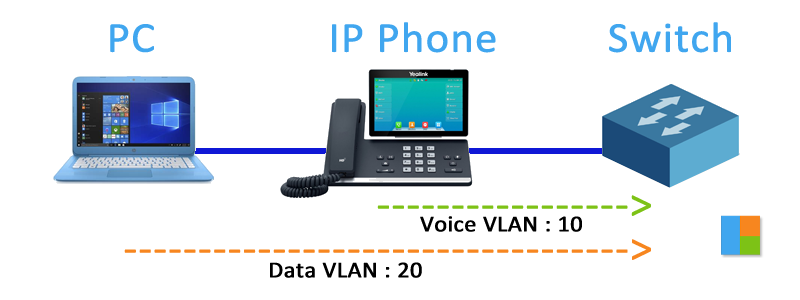LAN Segmentation
VoIP Works Over Flat & Segmented Networks
MPVEX’s Voice over Internet Protocol (VoIP) technology allows voice communications to be transmitted over IP networks such as the internet or local area networks (LANs). VoIP can work effectively over a flat network architecture or a segmented LAN, each with its advantages and considerations.
VoIP over a Flat Network:
- Single Broadcast Domain: In a flat network, all devices are typically in the same broadcast domain, meaning they can communicate directly without needing to route through multiple network segments.
- Ease of Configuration: Setting up VoIP devices and managing network configurations may be simpler in a flat network because there are no segmentation complexities to consider.
- Low Latency: VoIP calls require low latency to maintain voice quality. In a flat network with fewer hops and routing devices, latency can be minimized, contributing to better call quality.
- Potential Broadcast Issues: As the network grows larger, flat architectures can suffer from increased broadcast traffic, potentially impacting network performance and VoIP call quality if not managed properly.
- Security Challenges: Flat networks may pose security challenges as all devices are in the same broadcast domain, making it easier for malicious actors to access and exploit network resources.
VoIP with LAN Segmentation:
- Traffic Isolation: LAN segmentation divides the network into separate broadcast domains or VLANs (Virtual LANs), allowing for traffic isolation between different segments. VoIP traffic can be segregated to prioritize and optimize its performance.
- Improved Security: Segmented LANs enhance network security by restricting access between segments based on policies and access control lists (ACLs), reducing the risk of unauthorized access to VoIP devices or traffic.
- Quality of Service (QoS) Control: VLAN segmentation enables QoS policies to prioritize VoIP traffic, ensuring consistent bandwidth availability and low latency for voice communications even during network congestion.
- Scalability: Segmented LAN architectures are more scalable as they can accommodate growth by adding new VLANs or adjusting segmentation policies without affecting the entire network.
- Management Complexity: Managing a segmented LAN requires additional configuration and maintenance efforts compared to a flat network. Network administrators must ensure proper VLAN configurations, routing, and security policies.

In conclusion, VoIP can work effectively over both flat network architectures and segmented LANs, each offering distinct advantages and considerations. Organizations must evaluate their network requirements, scalability needs, security concerns, and management capabilities to determine the most suitable network architecture for deploying VoIP technology while maintaining optimal performance, security, and scalability.